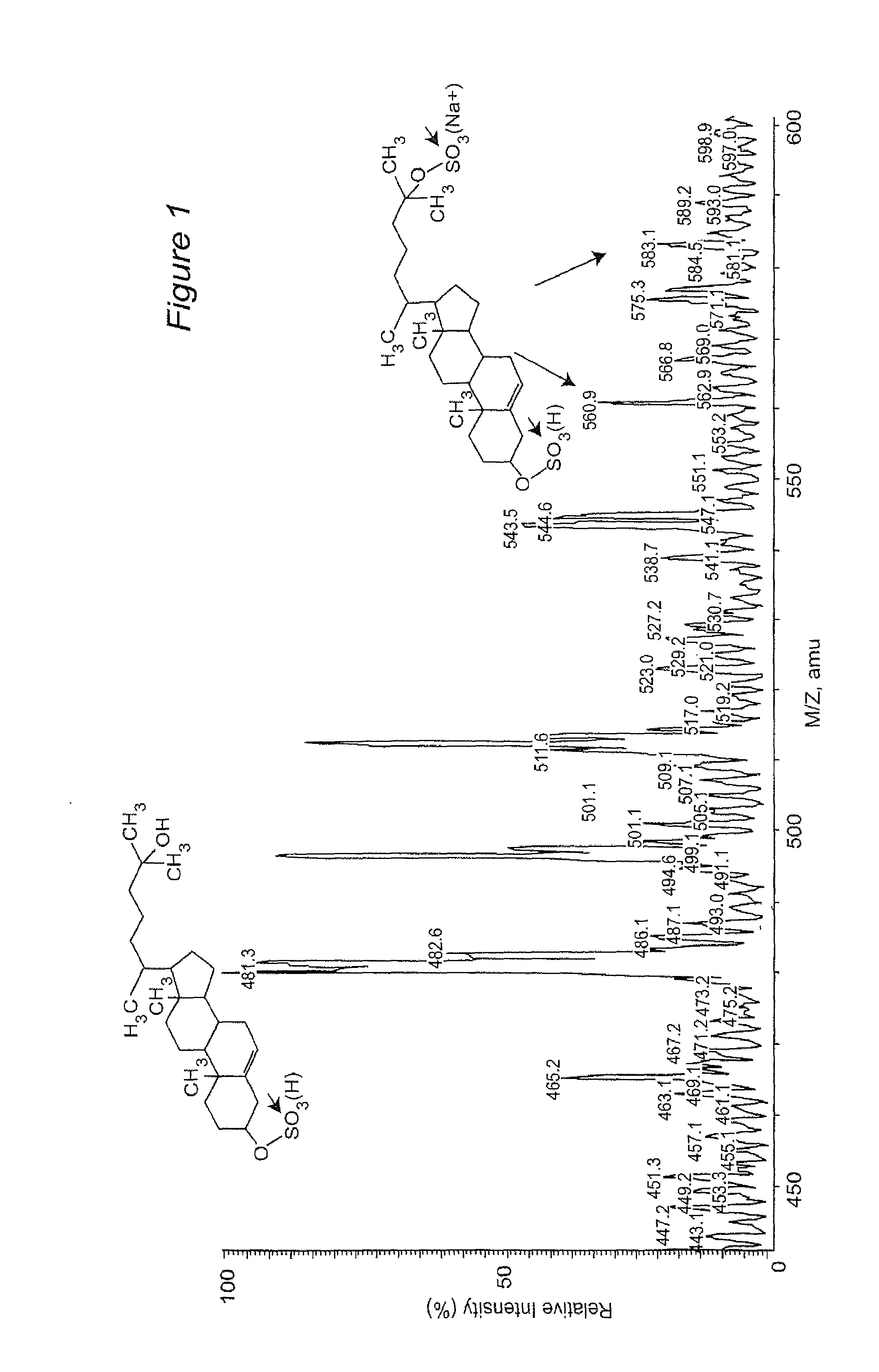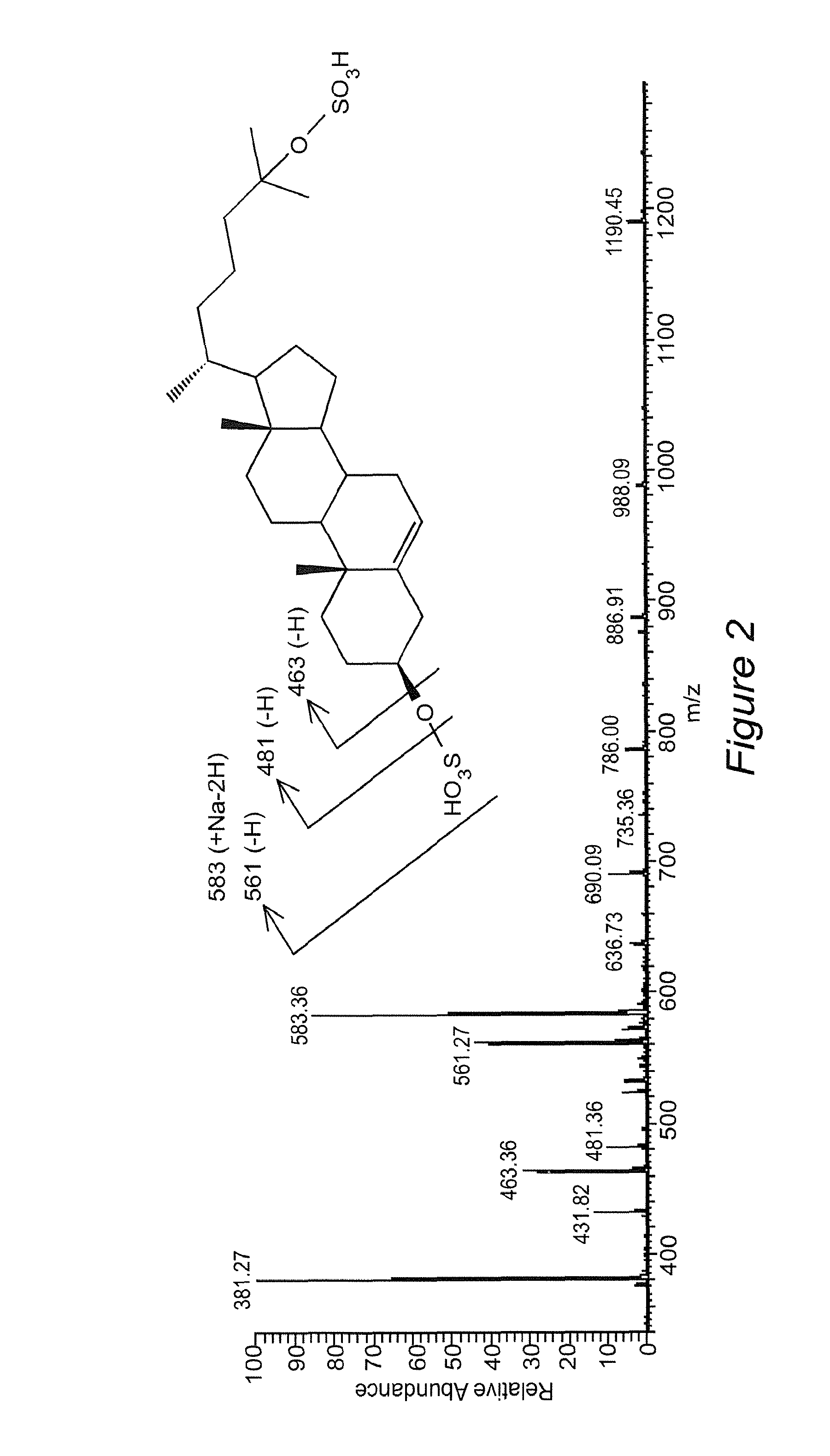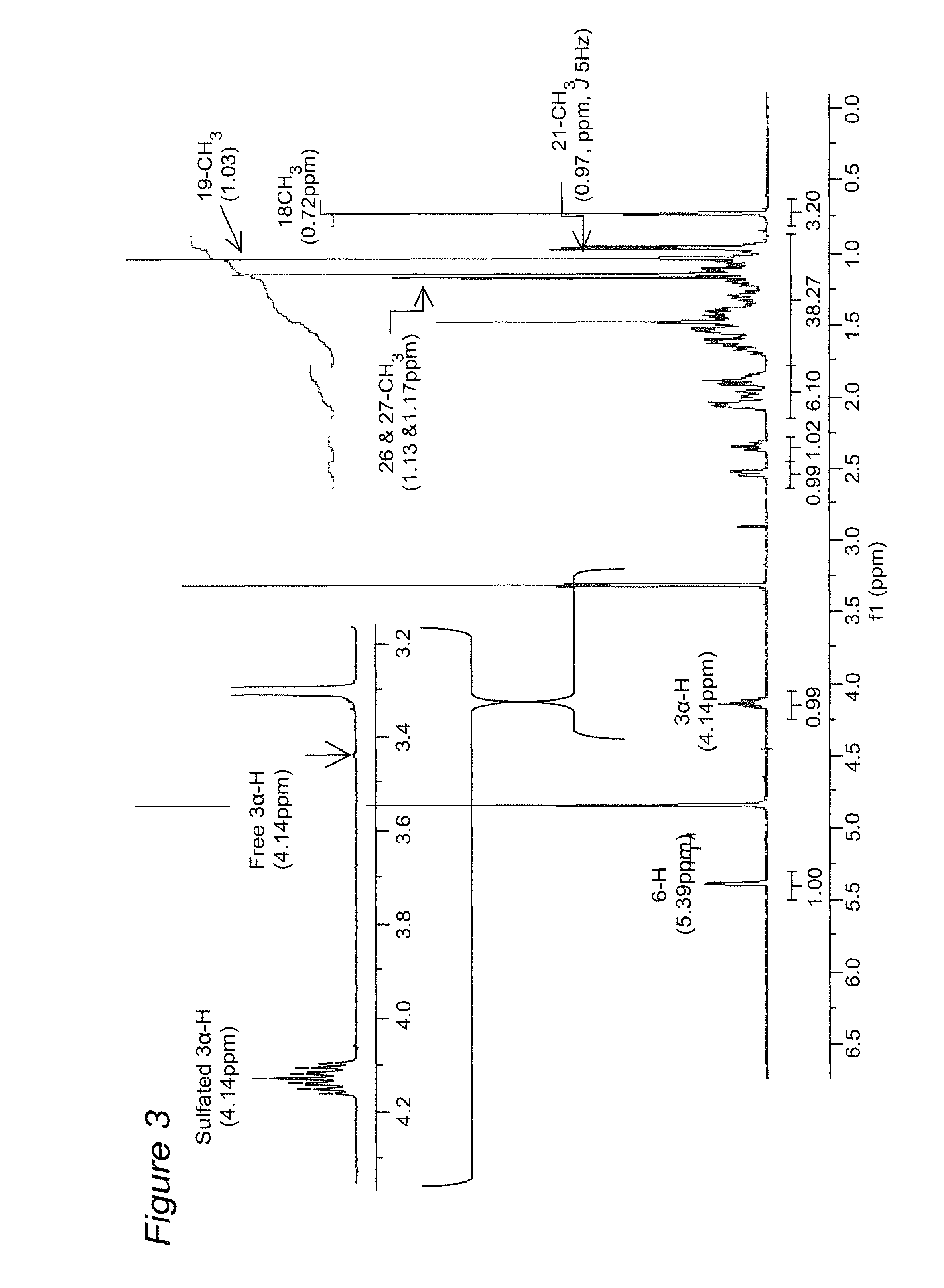Novel cholesterol metabolite, 5-cholesten, 3beta-25-diol, disulfate (25hcds) for therapy of metabolic disorders, hyperlipidemia, diabetes, fatty livers diseases and atherosclerosis
a cholesterol metabolite and metabolite technology, applied in the field of cholesterol metabolites, can solve the problems of inability to be approved for nafld treatment, limited hepatocyte storage capacity of fatty acids, cell damage, etc., and achieve the effects of reducing intracellular lipid levels, reducing mrna levels of sterol regulatory element binding proteins, and increasing expression
- Summary
- Abstract
- Description
- Claims
- Application Information
AI Technical Summary
Benefits of technology
Problems solved by technology
Method used
Image
Examples
example
A Novel Cholesterol Metabolite, 5-Cholesten, 3β, 25-Diol, Disulfate (25HCDS), Decreases Lipid Biosynthesis and Suppresses Inflammatory Responses In Vitro and In Vivo
Introduction
[0065]It has been shown that there is widespread dysregulation of lipid metabolism in non-alcoholic fatty liver diseases (NAFLD) and, specifically, there are major perturbations in cholesterol metabolism. The potential mechanisms by which such perturbations may lead to NAFLD via nuclear receptor signaling remain unclear. In the present study, a novel cholesterol metabolite, 5-cholesten-3β, 25-diol, disulfate (25HCDS) was identified in primary rat hepatocytes. As described herein, 25HCDS has now been chemically synthesized and its biological function has been studied. Administration of 25HCDS (25 μM) to human THP-1 macrophages and HepG2 cells, and in vivo to mouse NAFLD animal models, increased PPARγ and PPARγ coactivator 1 alpha (PGC-1α) expression and decreased expression of key proteins involved in lipid bi...
PUM
| Property | Measurement | Unit |
|---|---|---|
| temperature | aaaaa | aaaaa |
| temperature | aaaaa | aaaaa |
| body weight | aaaaa | aaaaa |
Abstract
Description
Claims
Application Information
 Login to View More
Login to View More - R&D
- Intellectual Property
- Life Sciences
- Materials
- Tech Scout
- Unparalleled Data Quality
- Higher Quality Content
- 60% Fewer Hallucinations
Browse by: Latest US Patents, China's latest patents, Technical Efficacy Thesaurus, Application Domain, Technology Topic, Popular Technical Reports.
© 2025 PatSnap. All rights reserved.Legal|Privacy policy|Modern Slavery Act Transparency Statement|Sitemap|About US| Contact US: help@patsnap.com



